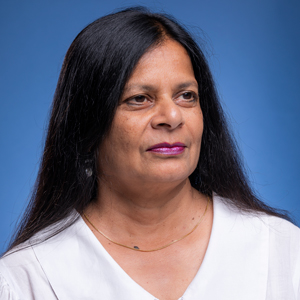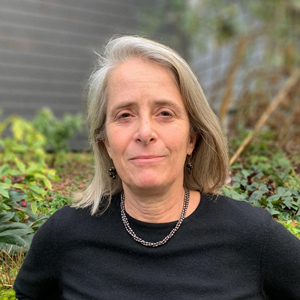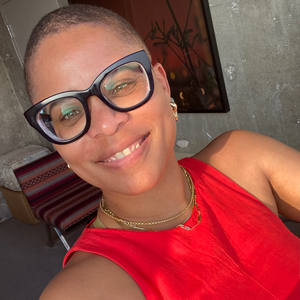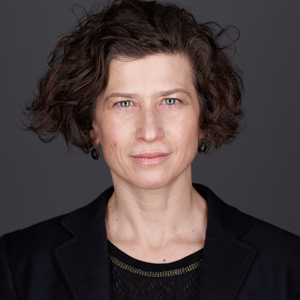-
Membership
Membership
Anyone with an interest in the history of the built environment is welcome to join the Society of Architectural Historians -
Conferences
Conferences
SAH Annual International Conferences bring members together for scholarly exchange and networking -
Publications
Publications
Through print and digital publications, SAH documents the history of the built environment and disseminates scholarship -
Programs
Programs
SAH promotes meaningful engagement with the history of the built environment through its programs -
Jobs & Opportunities
Jobs & Opportunities
SAH provides resources, fellowships, and grants to help further your career and professional life -
Support
Support
We invite you to support the educational mission of SAH by making a gift, becoming a member, or volunteering -
About
About
SAH promotes the study, interpretation, and conservation of the built environment worldwide for the benefit of all
SAH Announces Nominations for Incoming Board Members for 2024
Apr 29, 2024
by
SAH News
The Society of Architectural Historians is pleased to announce six nominees to the SAH board of directors for 2024. The SAH Nominating Committee recommends the following outstanding individuals for election to the SAH Board at the annual business meeting to be held at the Albuquerque Convention Center on Wednesday, April 17, 2024, at 6:00 pm. Proxy ballots will be sent via email for SAH members who are unable to attend the meeting in person.
Vice President

Swati Chattopadhyay is Professor in the Department of History of Art and Architecture with an affiliated appointment in Comparative Literature at the University of California, Santa Barbara. An architect and architectural historian, she specializes in modern architecture and urbanism, and the cultural landscape of the British empire. Her most recently published book is Small Spaces: Recasting the Architecture of Empire (Bloomsbury, 2023). Her current work includes Nature’s Infrastructure: The British Empire and the Making of the Gangetic Plains, 1760-1880, supported by the Guggenheim Foundation, and two digital humanities projects, Mapping the Ephemeral, and Bookscapes. A Fellow of the SAH and former editor of the JSAH, she is also a founding editor of PLATFORM.
Secretary

Bryan Clark Green is an architectural historian, historic preservationist, and educator whose work sits at the intersection of architecture and preservation. Through research and practice he investigates how buildings are modified over time, and how that modification impacts our understanding of architectural history. As Visiting Associate Professor of Practice in the School of Architecture at Virginia Tech, he teaches design studios and courses on historic preservation, adaptive reuse of historic buildings, and architectural history. Notable projects include the rehabilitation of Richmond’s Central National Bank into apartments; the conversion of the former Richmond Locomotive Works into the Movieland multiplex theater; and the adaptive reuse of the former Chesapeake & Chesapeake Railway Terminal into facilities for the VCU School of the Arts. He has produced historic structures reports on such landmarks as Bacon’s Castle in Surry County, Virginia; Robert Mills’ Monumental Church in Richmond, VA, James Renwick’s Fredericksburg Courthouse in Fredericksburg, VA, and the Smithsonian National Museum of Natural History in Washington, DC.
Directors

Alex Bremner is professor of architectural history at the University of Edinburgh. His research focuses on the history and theory of nineteenth- and early twentieth-century British architecture, with a special interest in British imperial and colonial architecture. He is a longstanding member of SAH and has published a number of articles in JSAH. His books include Imperial Gothic: Religious Architecture and High Anglican Culture in the British Empire, c.1840–1870 (2013), Architecture and the British Empire (2016, 2020), and Building Greater Britain: Architecture, Imperialism, and the Edwardian Baroque Revival, c.1885–1920 (2022). He looks forward to helping the Society realize its plans for the future.

Suha Hasan is an architect and founder of ASH, an architecture practice based in Stockholm, Sweden. She has lectured and taught in universities in Bahrain, Egypt, Singapore, Sweden, Sudan, and the UK. Before completing an architecture degree, she trained and worked as a journalist for Khartoum Monitor. Suha is the founder of Mawane, a platform for urban research based in Bahrain and a founding member of the MSc [Modern Sudan collective]. Both platforms enable researching and sharing the outcomes through public art exhibitions, talks, and workshops. She is the head of the AA Visiting School Khartoum, which explores the intersection of architecture history and the environment, and the upcoming AA Visiting School Bahrain that follows the same agenda. Suha served as a consultant for UNDP Sudan. Currently she works with the Sharjah Triennale as a consultant for the Public Program for the upcoming second iteration of the Triennale. She co-founded the Docomomo International Chapters in Bahrain and Sudan and serves as a board member and advisor in both chapters.

Ann C. Huppert is associate professor of architectural history in the Department of Architecture at the University of Washington. Her research and teaching address architecture, landscape, and urbanism in the early modern period, especially on the Italian peninsula and the Mediterranean world. Her current book project, Building Knowledge: The Culture of Construction in Sixteenth-Century Rome, redefines architectural authorship by examining the contributions of builders, craftsmen, and artisans along with those identified as architects, and charts the exchange of knowledge on worksites across the city. She also is collaborating on a comprehensive construction history of the Roman Church of Il Gesù with Pamela O. Long. She is the author of Becoming an Architect in Renaissance Italy: Art, Science, and the Career of Baldassarre Peruzzi (Yale University Press, 2015), which explores Peruzzi’s mathematical aptitude, representational skills, and the influence of antiquity on his designs through the lens of period drawings. She received her doctorate in architectural history from the University of Virginia and has held fellowships at the Bibliotheca Hertziana, Rome, and at Worcester College, Oxford. Her research has received support from the Center for Advanced Study in the Visual Arts at the National Gallery of Art, the American Philosophical Society, the Samuel H. Kress Foundation, and the Renaissance Society of America.

Jacquelyn Sawyer is a committed arts and nonprofit professional who has spent nearly two decades expanding arts and education opportunities for underrepresented groups and underserved communities. Jacquelyn began her career in the Baltimore City Public Schools system, where she taught middle and high school social studies. After six years in the classroom, she transitioned to the nonprofit sector where she led arts and education programming and accessibility efforts with organizations like The Baltimore Urban Debate League, WE Charity, the National Aquarium, and the Reginald F. Lewis Museum. Jacquelyn has also served as a curriculum developer, administrative coach, and teacher evaluator for school systems across the country, including District of Columbia Public Schools, Dallas Independent School District, and Miami-Dade County Public Schools. Jacquelyn currently serves as the vice president of education and engagement at the National Building Museum. She received her undergraduate degree in urban and suburban studies from George Mason University and her master’s degree in curriculum and instruction from Johns Hopkins University. She is the proud mother of two boys, Thomas and George, and in her time away from work she is an avid reader, jazz enthusiast, amateur baker, and enjoys hiking, camping, and all things outdoors.

Mantha Zarmakoupi is an architectural historian and classical archaeologist. She has published widely on Greek and Roman architecture and art—including the monographs Shaping Roman Landscape (Getty, 2023) and Designing for Luxury on the Bay of Naples (c. 100 BCE–79 CE) (Oxford University Press, 2014), edited volumes The Villa of the Papyri at Herculaneum (De Gruyter, 2010) and Hermogenes and Hellenistic-Roman Temple Building in Greece and Asia Minor (University of Wisconsin Press, forthcoming)—as well as on the urban development and harbor infrastructure of late Hellenistic Delos. She currently conducts an archaeological project in collaboration with Ankara University at the Bouleuterion of Teos in Turkey. Mantha systematically fosters conversations across the fields of architecture and archaeology. For instance, her edited volume, Looking at the City (Melissa, 2023), tackles architectural and archaeological perspectives in the study of ancient cities, and her forthcoming edited volume with Simon Richards on Doxiadis and the Delos Symposia (1963–1975) addresses the intertwinement of ideas on ancient urbanism in 20th-century discussions on urbanism and ecology. Together with David Gissen and Jennifer Stager, they have developed the research installation An Archaeology of Disability that explores what it means to reconstruct lost elements of the Acropolis through the lens of human impairment.


